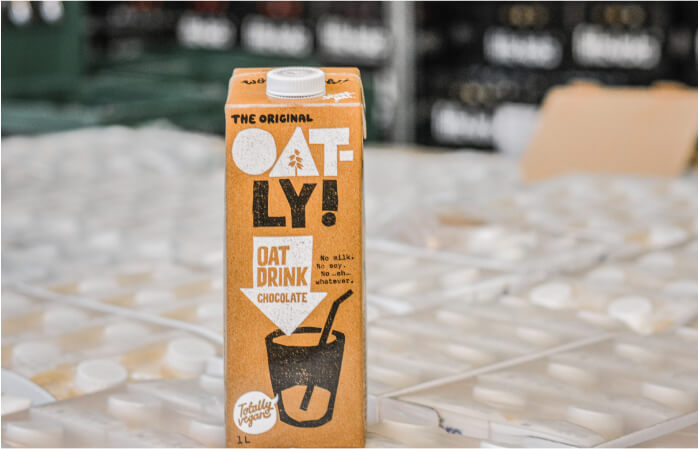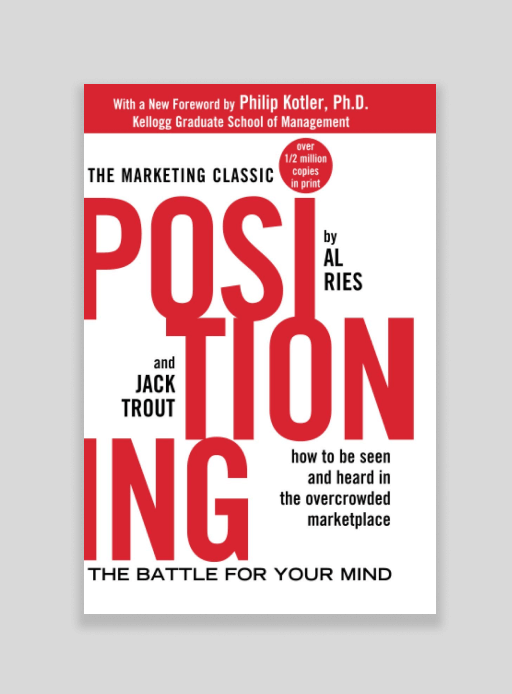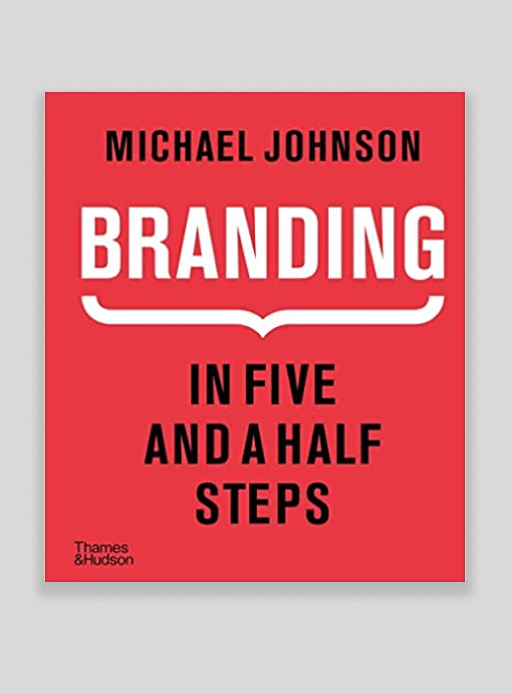Definition and origin
The word branding originally meant the marking of herd animals with a branding iron.
Branding in the marketing context has a similar function: the purpose is to put a stamp on a brand so that it can be clearly distinguished from competitors and recognized by consumers.
To this end, visual and communicative messages are developed that pay tribute to this image and with which target groups can identify. These include, for example, brand values, brand name, brand story and brand design.
The reason for building a brand is an offer or business model that needs a brand image to generate the right brand awareness. Classically, these are the products or services of a company.
In the course of the process, characteristic values and features of the company or product are elaborated for which the brand stands. These are then reflected in the communication and design to suggest the right associations.
However, branding is not limited to services and products, but can also be developed for individuals, political and social initiatives or places or regions in order to market them in a targeted manner.
What are the goals of branding?
Differentiation from competitors
Competitive pressure is considerable in any industry: every year, more than 80,000 new brands are registered in Germany alone.
Branding helps to stand out from the crowd and leave a lasting impression. Good branding shows how a company or product is different or unique.
Often, offers differ only minimally in terms of quality. In this case, it is all the more important to convey emotional benefits in addition to rational added value in order to persuade customers to choose you.
Consistent brand experience
For a brand to be recognizable as such – whether it’s a website, social media post or trade show booth – a consistent brand experience must be ensured.
Branding defines communicative and visual foundations that convey the same impression regardless of the touchpoint.
Brand perception
To retain loyal customers, a brand must be recognizable. On average, a person needs 8 repetitions to internalize a piece of information – regardless of whether it is a vocabulary word in a foreign language, a brand message or an image.
The goal is to develop branding with a high recognition value. Ideally, this means that customers will recognize the brand by its style, tonality, colors and shapes, even without having seen the name.
Establishing an emotional connection between brand and target group
With today’s mass of often almost identical offers and information, the rational benefit of a product is no longer sufficient to differentiate it from the competition.
Brands must therefore build up a valuable bond with their customers, create meaning and present a subjective benefit.
An emotional relationship with the brand strengthens customer loyalty and turns buyers and partners into a loyal community. Branding helps to create identification offers that are connectable for certain groups.
Purpose of branding
Of course, branding always has the purpose of differentiating the brand from the competition. In addition, it gives consumers, partners and talents orientation as to which companies, products and services suit them.
Good branding succeeds in inviting stakeholders into a brand world that conveys values with which customers identify and which they carry forward.
Example of fashion: Same price, same quality and color, different statements.
Three T-shirts in a similar price category have the same color, the same cut and are made of the same material. Only the brand logo is different in each case.

Rationally, there is no difference between the products. Nevertheless, consumers – consciously and unconsciously – choose a different T-shirt depending on which brand they identify with most.
The brand charges the product, provides orientation and ultimately becomes a purchase criterion: because the wearer says something about him/herself, depending on whether he/she chooses the T-shirt from Patagonia, Supreme or Lacoste.
Design is the silent ambassador of your brand.
Paul Rand
Why is branding so important?
Because you can’t not communicate. Branding is your silent brand ambassador, at every moment and at every touchpoint.
Ideally, branding communicates at a glance what the brand stands for and what it is all about, even in unmoderated contexts. It thus creates identification potential for customers without great communication effort.
In a nutshell: How does branding work?
Branding develops the strategic, communicative and visual identity of a brand in order to trigger certain associations and emotions in contact with the brand. Its goal is to make it clear at a glance what the brand stands for and thus to position it successfully in the market.
Well-known examples of successful branding

Lululemon
The Canadian it-label for yoga and sportswear combines functionality, comfort and aesthetics with the unique spirit of yoga. Lululemon formulates it in their Purpose: Living a life in practice leads to a more purposeful life – on and off the mat. Lululemon expresses the attitude of many yogi:nis in their branding.

Ben & Jerry’s
Everyone knows the ice cream brand’s playful packaging. While unusual flavors and fair ingredients help Ben & Jerry’s to a good position in the market, the branding helps to transform consumers into fans who are happy to spend more money on their ice cream. Ben & Jerry’s have created a brand world that puts activism and difference at the heart of the brand.

Patagonia
Quality that lasts was and is the credo of founder Yvon Chouinard. The brand’s refusal to compromise is its recipe for success. For years, the company has been posting sales in the millions, despite – or perhaps because of – a minimal outlay on marketing in the classic sense. Instead, the company focuses on self-similar brand management. Consistent branding that makes quality and sustainability tangible leads to a loyal community.

Oatly
Sold out – It’s not uncommon for Oatly. Demand for their oat milk products is often greater than what the brand can produce. A strong attitude and transparent communication make up Oatly’s branding. Swedish heritage and sustainability are ingrained in the brand DNA. With its rebellious branding and provocative messaging, Oatly draws attention to the health and environmental consequences of oat milk over cow’s milk.

Apple
The bitten apple is arguably the most recognizable logo in the world. Since its inception, Apple has focused on relationships with its customers and building a loyal community. The brand’s branding aims to trigger certain emotions that are linked to product benefits. With the “Shot on iPhone” campaign, the brand invites customers to become part of the Apple community.

Fritz-Kola
The Fritz company has made soda drinking political. With opinionated advertising and initiatives that fight right-wing radicalism and homelessness, Fritz-Kola differentiates not only with its flavors. Founded in 2003, the soda still stands for a rebellious but at the same time sympathetic attitude. The younger generations in particular can identify with this. The logo now dominates the image of refrigerators and drink boards in countless bars.
Marketing vs Branding
In the development and management of a brand, the fields of branding and marketing are close to each other. Incorrectly, they are sometimes used interchangeably, because there are differences in their approaches.
Branding is the basis for marketing. It defines strategic, communicative and visual foundations within which marketing actions can be developed.
In the branding process, the tonality is defined, a communication concept is developed and decisions are made about the color scheme, brand elements and visual language.
Only with a defined branding can marketing measures be planned and rolled out in a target-oriented manner. In this way, branding ensures that the essence of the brand is conveyed, whether on social media, in a print ad, in a commercial or in the showroom.
| Marketing | Branding |
| Marketing is the short-term promotion of products and services | Branding achieves the long-term establishment of a unique brand identity |
| Marketing communicates specific product characteristics to target groups | Branding builds a relationship with its customers |
| Marketing strengthens the sale of a (new) product or service | Branding strengthens brand awareness and trust in the brand |
| Marketing focuses on what (potential) customers buy | Branding focuses on how customers feel in contact with the brand |
| Marketing gains the attention of customers | Branding keeps the attention of customers |
| Marketing measures are campaigns for social media, TV, radio and print | Branding forms the strategic basis for marketing measures to pay off on the brand. |
Different types of branding
Corporate Branding
Branding of a company
Product Branding
Branding of a single product or product range
Co-Branding
Two or more brands appear together, e.g. Apple Watch and Nike
Geographic Branding
Cities, regions or places of interest are staged like a brand
Personal Branding
Branding of individuals, e.g. public figures or executives
Employer Branding
Branding of a company or organization as an attractive employer in order to retain talent
Note
In the field of branding, there are many terms that are used synonymously but have different meanings, or conversely, different words are used for the same content.
Corporate identity or brand identity and corporate design or brand design are used congruently, especially in English-speaking countries. However, a distinction should be made here: along with corporate culture, corporate behavior and corporate communication, corporate design is merely part of corporate identity.
Branding: the basis for every good marketing strategy
Campaigns, social media posts, events – marketing measures serve to create positive brand experiences for customers and to establish the brand in the minds of the target group. In order for the measures to achieve the desired effect and contribute to brand awareness, it is essential that they are derived from the brand identity.
Strategy model Helder Brand Frame®
Branding helps to avoid getting bogged down in the marketing strategy because it provides a defined framework for the brand world.
If it is clear what the brand stands for, which target group it wants to communicate with and which visual language it needs to speak, it is much easier to decide which slogans, campaigns, banners or posts are on brand and which are not.
This already starts with the decision for the marketing channel. Only if you are aware of the target group and the brand personality will you be able to place messages in the right place.
The importance of image management
A brand is a living construct and its image is directly dependent on how actions and statements of the brand are perceived from the outside and inside.
The brand image is the result of a defined and lived corporate identity. In order for a brand to be perceived positively in the long term, the branding must also be filled with life through appropriate measures. Measures include events, cooperations and initiatives.
Successful brand management also involves regularly checking branding to see whether it still meets the aesthetic, cultural or everyday needs of modern society.
A good brand image is important because it determines whether products are purchased, services recommended or partnerships entered into.
Branding elements: What does strong branding need?
Holistic branding has four main elements: Brand strategy, brand communication, brand name and the brand design. These should always be interrelated to create a holistic and consistent overall image.
Brand Identity
The first step is to develop the fundamentals that define the brand identity. These include:
Target groups: Definition or brief description of the most important target group(s). Buyer Personae are very helpful for this, for B2C brands also Sinus Milieus.
BRAND POSITIONING Definition of the brand’s core performance and its position in the market as distinct from the competition.
BRAND CORE The authoritative characteristic of the brand that it wants to occupy and be associated with in the long term.
BRAND PURPOSE Definition or brief statement of the brand’s reason for existence. The Purpose describes the social value that the company adds through profit-oriented activities.
Vision Statement definition or short statement of what the company is striving for in the near future. The vision orients and motivates employees.
Mission statement definition or brief statement of the added value that the brand’s offering provides for customers.
Brand Communication
Based on defined target groups, values, purpose, vision and mission, a communication concept is developed that corresponds to the brand identity and appeals to potential customers, partners and talents. This includes:
- Storytelling: a brand story is used to establish the basis for consistent communication. The brand story clarifies performance, values and USP and provides a dramaturgical answer to the question of how the brand improves, enriches or makes the lives of its customers easier.
- Claiming: A claim is a concise statement that establishes a link to the brand promise. It is established in combination with the brand name over an extended period of time.
- Messaging: Brand messages can be derived from the brand story and used in different touchpoints, e.g. the landing page, social media posts, presentations, videos, billboards.
- Tonality: defining how the brand communicates externally (and internally). It defines which wording will resonate with the brand, which words should be avoided, but also how formally customers should be approached.
Brand Name
Based on a defined brand identity, a brand name is generated that is as succinct as possible, suggests the company’s performance or attitude, and pays tribute to the brand identity.
Brand Design
Brand design is the translation of the brand identity into a visual appearance. It expresses the brand’s personality at a glance. It includes:
Brand Logo
A logo is a graphic or typographic sign that stands as a symbol for a brand or an organization. It is used to make a brand recognizable at different touchpoints. Brand Logo
Brand Colors
Colors carry meaning. Viewers:inside can infer characteristics of a brand from colors and color combinations, e.g., which age group it is aimed at, whether it is progressive or conservative, expensive or inexpensive. Color Scheme
Brand Typography
Fonts and font combinations are a central component of brand design. They have a direct influence on readability and the general appearance. Typography can be used to create not only content hierarchies, but also moods in an appearance.
Brand Imagery
It defines the character of an image or series of images in the context of a unified brand identity; this includes aspects such as perspective, color climate, and stylistics such as depth of field and backlighting. Brand Imagery
Brand Icons
Icons are symbols that visualize processes, product features or objects in a simple way. Brand Icons
Brand Guidelines
Brand guidelines include the essential components of brand identity, communicative and design rules, and examples of use. Brand Guidelines
Brand Website
Web design is a central application of brand design. As one of the most important touchpoints, it is essential that the website visually speaks the same language as all other means of communication. Brand Website
What is good branding worth?
Branding is the ubiquitous communicator of what the brand stands for, 24/7. Well thought out and done, it increases the value of a brand.
The intangible value that a brand has according to customer:perception is called brand equity. Very well-known brands that enjoy a positive customer perception have a very high brand equity that far exceeds their own material and intellectual resources.
Once a brand is firmly established with a target group, this recognition value is almost priceless.
Strong branding pays off for:
- The trust gained in the brand and the resulting higher likelihood of preferring a product or service of the brand.
- Marketing costs that can be massively reduced by building a loyal customer:base.
- When launching new products, the risk is lower because there is already trust in the brand
How much does branding cost?
The cost of branding or rebranding depends on a number of variables, including the scope of the services requested, but also the size and reputation of the branding agency. The size of the client also has an influence on process structures and thus on the budget.
- Brand Audit from 1.200 €
- Brand Strategy from 15.000 €
- Brand Story from 7.500 €
- Naming from 7.000 €
- Brand Design from 12.000 €
Branding books
If you want to learn more about branding, we recommend the following books:

Start with why
Simon Sinek
Positioning
Al Ries, Jack Trout
The Brand Gap
Marty Neumeier
Branding: In Five and a Half Steps
Michael Johnson









